Harland & Wolff has announced the completion of the first barge at its yard in Methil, Fife, since 1856.
The barge, which has been made for waste management and recycling business Cory, will launch from Methil and be taken by sea to Cory’s lighterage site on the banks of the River Thames.
It will join Cory’s existing fleet of tugs and barges which are used to transport recyclable and non-recyclable waste via a series of river-based transfer stations across London. Cory is one of the largest commercial operators on the Thames, and its use of the river to transport waste removes around 100,000 truck journeys from London’s roads each year.
This project has kept 115 people in active work at the Methil facility and enabled further employment, bringing the workforce up to around 150 people. Around 15 year one and year two apprentices have been able to work on this project, providing them with essential shipbuilding experience at this crucial early stage of their careers.
Cory placed an initial order of 11 barges with Harland & Wolff on 1st June 2022 worth £8.5 million. Subsequently, Cory entered into a second contract for a further 12 barges, taking the contract total to £18.1 million.
The barges will play a vital role in Cory’s growth plans. The company reached financial close on its Riverside 2 Energy from Waste (EfW) facility at the end of 2022, which will divert c.650,000 tonnes of non-recyclable waste from landfill. A bolstered fleet of tugs and barges will be essential to deliver the feedstock for the new facility.
The contract with Cory has enabled the resurgence of shipbuilding skills at Harland & Wolff’s Methil site since the Santiago was completed in 1856.
In Belfast, the contract has allowed Harland & Wolff’s iconic shipyard to demonstrate its world-class shipbuilding skills, recommission its vast fabrication halls and pass these crucial skills and techniques on to the next generation of shipyard workers, ahead of its ramp up following the execution of the manufacture subcontract for the three vessel Fleet Solid Support (FSS) Programme.
Fran Comerford-Cole, Director of Logistics at Cory, said:
“Cory has been operating on the river for well over 200 years, and we are proud that we are able to continue our support for the UK maritime sector through this contract with Harland & Wolff. I hope that this marks the beginning of an exciting new chapter at the Methil shipyard, and we look forward to welcoming the new barge to our fleet.”
Matt Smith, General Manager of Harland & Wolff (Methil) commented following the delivery:
“We were delighted to welcome the Cory barge fabrication project into the Methil yard. Whilst many of the shipbuilding skills that are required still exist in the yard, this is the first time since 1856 that we have actually seen shipbuilding occur in this yard. The completion of the first barge is a milestone in this yard’s new journey and demonstrates the strength and versatility of skill that exists in the Methil workforce.”
In February 2021, the company acquired the assets of two Scottish-based yards along the east and west coasts. Now known as Harland & Wolff (Methil) and Harland & Wolff (Arnish), these facilities will focus on fabrication work within the renewables, energy and defence sectors.


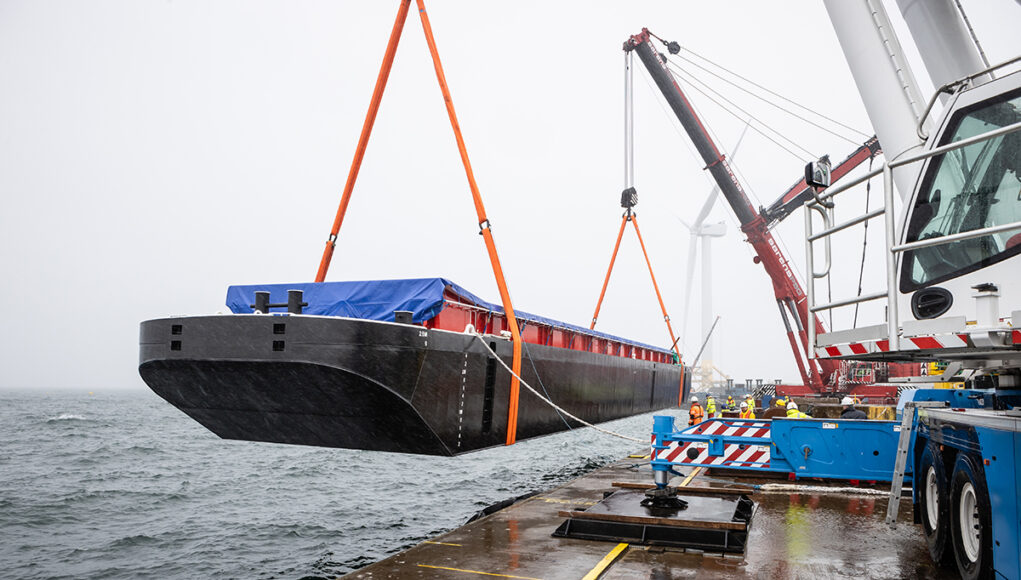
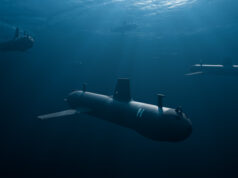
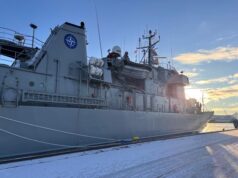



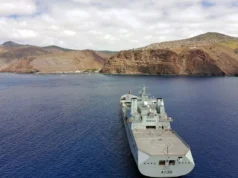
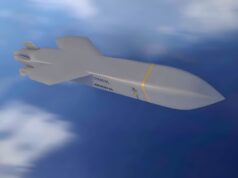
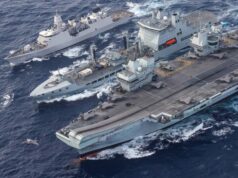
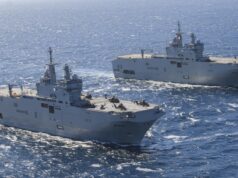


Good training for the Belfast staff. FFS, sorry FSS next.
I thought the UK was uncompetitive on these types on basic builds, it appears not to be the case. Roll on the excuses as to why UK shipbuilding must be 100% dependant on UK MoD orders 😀
Well if u factor in the low cost of each barge and then factor in how much could be saved by going to a far off country to build the barge and then transport it back to the country the costs may be quite similar.
If am a commercial company and multiple yards can build the same product with the same life costs obviously the cheaper one will win.
I am really happy to hear of a revival , however modest, of commercial shipbuilding in Fife. And it’s always a relief to hear of a yard making a successful bid on a private contract.
Canada has a similar situation. In and around Vancouver BC, where I live, we have three small yards which build excellent coastal tugs. They have been quite busy. Seaspan Victoria Shipyard (formerly Yarrow’s) graving dock in Victoria and Seaspan’s submersible drydock in North Vancouver have pretty full schedules doing refits and ship repair.
But for larger newbuild work, the whole nation only has three shipyards: Seaspan’s Vancouver Yard, Montreal’s Davie, and Halifax’s Irving. These are now occupied with building a handful of frigates, coastguard icebreakers, naval supply ships and a couple of Arctic patrol ships, with optimistically meagre armament. They are the first large ship newbuild contracts the Canadian government has laid down since 1995. I
As far as I know, none of these yards have had a non- government newbuild since the 1990s.
This is for a number of reasons, one being that labour costs are high relative to China and other shipbuilding countries like Turkey and Vietnam, making it hard to compete for international contracts. But it would be hard to argue that labour costs alone are completely decisive in this. Where I live the provincial government-owned BC Ferry corporation ordered its last full-sized ships from Flensburg, Germany and then sailed them here. Mid -size ships for BC ferries have since all come from Poland. The claim was that the yards available- essentially just Seaspan Vancouver – lacked the capacity to do the work. Other shipbuilding giants like Japan, the Scandinavian countries and even Korea have labour costs that are similar to ours.
Canada emerged from WWIi with a huge shipbuilding capacity. This was deliberately not supported by government policy and declined almost as rapidly as it emerged.
The initial collapse of shipbuilding in a country is very hard to reverse. They are hugely capital intensive, and require highly skilled labour. Not unlike aerospace.
Both these industries, shipbuilding and aerospace, are strategic to our nations, and at least somewhat emotionally resonant with voters in both our countries. So while there may be fiscal or ideological barriers to government subsidies, they can’t be allowed to die completely.
Dependence on government contracts with no ongoing support, however, means that teams of skilled people get assembled, trained and then dispersed according to the life cycles of the government-ordered vessels.
In my country, with governments of all ideological brands notoriously disinterested in funding national defense and with the nation’s capital geographically distant from salt water, maritime matters are really not top of mind to our beurocracy.
So roughly once a generation on Canada we get a flurry of shipbuilding on government accounts at vastly inflated costs because the moribund yards and infrastructure have to be constructed along with the vessels. Following the launchings the yards then lay off most of their workforce and then typically limp along on refit & repair work.
I suspect this is a similar story to the situation in the UK, with the exception that British shipbuilding is much more highly developed than here.
I’m inclined to think that ongoing government support of shipbuilding pays off in the long run. Subsidies are more than “corporate welfare”, they are investments in capability, and investments in creating and maintaining a skilled workforce. This in turn creates thriving communites and has huge additional economic benefits.
Im delighted in seeing this Harland & Wolff barge contract for Cory. Its a good start. In BC, we get our barges on heavy lift ships from China. And I hope these young apprentices the contract is employing will have thriving careers afterwards. These barge contracts incrementally improve the position of British shipbuilding as a whole. Meanwhile, I hope going forward governments in both our countries will recognise the long term value of large ship construction and support it accordingly.
Great insight. Sounds similar indeed to Britain, but Canada really should have a thriving ship/boat building industry considering how reliant it is on sea/river/lake transport and such a vast Country should have the capacity to save on unit costs if properly supported. Seems a bit too accepting of relying on its big neighbour to the south for things it really could and should be doing itself. Sad really. Very different to what seems to be the attitude in Australia, where I endlessly read about scientific and technological developments, even if some is hype it has its own psychological effects on positivity. Would love to see Canada being more assertive, it very much has the potential to do so, geez it’s part of the G7 for heavens sake and vast potential wealth.
Whilst it is great to see a resurgence in work at Belfast and Methill this isn’t exactly much to celebrate. It’s a barge not a ship, it has no engines, sails or any form of motive power or steering. It’s basically just a big floating waste skip that gets towed by a Tug.
But it’s helping get H&W back up and running, so is Defence related.
Anyone know what Appledore are up to at present ?
I went to school a mile from the yard at Methil. In my memory the yard as such was in the sixties the Marshalling yard and pit top workings for the Wellesley Colliery. Following it’s closer RDL built production platforms for the North Sea. It was a huge employer then and would have had as many apprentices as total workforce today. In more recent times the built the legs for offshore wind turbines. It’s a far cry from any of it’s peaks in employment. For the area though any jobs are welcome. As you say barges are not ships and this site is not geared for shipbuilding.
But either way they should be supported, H&W and the Clyde shouldn’t be the only show in town
Well there is Rosyth where they built the carriers. One of only two reasonably sized drydocks. As Scot I would love nothing better than a resurgence in shipbuilding on the Tyne,Mersey, and of course the Clyde. Even better if it could use Scottish steel from Ravenscraig. I fear it is all just a pipe dream. There were be no Scottish steel again, and I see no major vessel being built outside of MOD contracts.
Ferguson Marine is finished or as good as. Support as you say could be provided but the Scottish government handling of the ferries debacle will put politicians of all flavours of going down that road.
There are bigger drydocks than Rosyth such as Inchgreen, H&W, AP, it’s the smallest of the 4 and the hardest to access. Unfortunately the drydock cannot be used for building due to it being on standby for the QE’s.
Inchgreen currently is just an empty dry dock with nothing else. A&P is also quite small and doesn’t have much build experience.
H&W is also small but benefits from having the largest dry dock in the western hemisphere and two of the largest gantry cranes in the world of course.
Of the 4 Rosyth is by far the best suited to shipbuilding. It’s a large yard and has quite a bit of space for expansion, something that H&W and Inchgreen don’t have.
Hopefully submarine decommissioning will clear up and the MOD will either use H&W’s second dry dock or cough up some money when the lease ends.
Might be wrong but H&W Appledore completed some refurb work for fishing vessels pretty recently.
They also purchased the former HMS Atherstone to convert her for commercial use which was said to be happening down in Devon.
Imagine they’ll be working on some sections for FSS before long.
These floating skips are needed on the Thames the carry away all the waste that comes out of Westminster and surrounding public buildings 😂😂😂😂😂😂😂
Agree 650,000 tons of politically produced stink per annum sounds about right to me. Westminster is swimming in it.
Agree these are very basic hulls. However keeps vital welding and panel fabrication jobs going and hull forms like this can be rapidly reconfigured to form all sorts of naval applications should the need arise.
Other than possibly the T31 builds at Rosyth I just don’t see it happening because of the transit distances involved. The idea and cost involved with putting blocks on a barge and towing them right round the North of Scotland just isn’t viable.
Not when you have CL, Appledore and Fergusons on the west coast.
The opposite happened with the QE’s but they were much larger blocks and there just wasn’t anyway they could be fabricated at Rosyth.
Barges, fishing fleets, ferries, offshore support vessels of all types for lighthouses, North Sea Oil & Gas and now renewable energy.
The UK is still a very maritime nation closer to home but to get these vessels built here the industry needs a firm base and increased support from HMG after years of boom and bust leading to decline.
If only The Treasury didn’t have so much sway and such rigid thinking departments would be better able to greater financial assistance to shipbuilders and plenty of other industries knowing that a lot of that revenue flows back into their hands as tax if the work stays here and playing a medium-long game rather than obsessing with the here and now we could actually see these companies becoming more competitive as experience and the economies of scale leads to lower costs.
Of course it’s a risk and it’s a strategy that would take more than the 5 year election cycle to bear fruit, hence why they don’t bother!
A by now well known TubeTuber, of whom I anticipate you’re aware, covering military industrial complex & investment strategies, evinced typical & succinct Auzzie humour when covering much of your above with regard to Nations that rely significantly on the financial sector for GDP. Saying put that ilk into a factory and ask them to manufacture would be akin to watching a reality TV show.
Didn’t fully understand that, but I’m taking it that it was saying that the UK predominantly a Financial Services economy, can’t expect to be able to design and build ships and an Australian defence commentator/comic was laughing about it. Which would surely raise the question as to why Australia is reliant upon this Country to design and in considerable part build its next generation of Frigates and Submarines? Should also perhaps be pointed out that Bae on whom it is so reliant to do so, is the 7th largest industrial Defence business in the World far biggest in Europe, whereas the largest Australian enterprise is Austal at 74th. Indeed we have a number ahead of that too, so not bad for a little old Financial Services obsessed industrial backwater really.
No, Spy
OK.
The Australian in question is Perun, Spy, of whom I’ve made mention before, but am unsure if you’re referencing him? If not, his weekly casts are fairly long, detailed and, as a consequence, rapid fire. Interesting insights, but some subjects can be somewhat dry; so, presumably, he intersperses a few wagisms to reignite & reward his audience for still being there? That’s it. All good humoured, even with regard to New Zealand. Not so much Comrade Vladimir Vladimirovic, but, heh, so what?
Rgs.
👍⚓⚓
Seems HMG agrees with you as they announced last month £500 million worth of credit guarantees (SCGS) as part of a £4 billion refresh of the National Shipbuilding Strategy all announced last month. All to help U.K. shipbuilding.
https://marineindustrynews.co.uk/uk-shipbuilding-credit-guarantee-scheme/
It is good that some credit guarantees are coming in.
Some soft loans for state of the art automated lines might well help too. TBH it is one of the biggest problems in the UK that the whole tax system isn’t set up to reward automation and productivity improvements. HMT’s terror is always that the system will be gamed – as it will be – and as it is in other countries – but they just suck it up and accept that is necessary to have constantly improving productivity. Well the Germans do anyway.
It is the cost of labour and energy in the UK that is the issue.
We still, just about, have spaces for yards although sadly we seem to have been unable to keep adjacent spaces free so that really efficient mega yards can be built with the whole thing undercover.
I think Rosyth is probably the only shipyard that has enough space to become a mega yard.
Even yards like H&W or CL which are quite small both have significant redevelopment projects on land adjacent to their sites which is a shame.
There is quite a bit of land adjacent to the Govan basin which is vacant and has been used for storage and recycling.
Govan’s still a very small yard, which isn’t an issue when it comes to frigate building.
In all honesty, mega yards are not what Britain should be trying to replicate. Shipbuilding is a very competitive industry and nobody is going to give a random new yard orders when they could go to an Asian shipyard that builds dozens of ships annually.
What’s needed is to replicate a shipyard like Meyer Werft. It builds 2-3 cruise ships each year whilst yards like Chantiers or Meyer Turku only build 1-2 despite being 2-3 times larger.
Excellent comment. You can see the wisdom of a maritime nation developing indigenous assets, I can see it and so van many more. The problem is to get the useless suits to see it.
Has a lot to do I fear with the many Thatcher obsessed Tories who still buy into her attitude that industrial jobs are effectively superfluous to this Country’s overall wealth which (which really about breaking the unions) has long been shown to be erroneous, but the Messiah must not be questioned. Despite the fact she also said that Airbus could never compete with Boeing (a company presently in turmoil and losing $1.5 billion alone on Starliner) and that it was pointless trying to compete in Space when the UK industry, despite Govt indifference, is thriving here by growing very innovative businesses of the type we need and could have been a far bigger driver of British expertise, influence, industrial mass and leadership if only it had been properly supported like it is in Germany. No surprise that the first two rocket Companies to exploit SaxaVord will be German. Mind you I guess they had a head start in the 40s eh 😈.
We agree. She did some things that needed to be done. Harold Wilson wanted to modernise industry (‘the white hot heat of technology’) but was defeated by the unions egged on by Callaghan. The issue wasn’t closing old industries but promoting newer ones and expanding high technology Asset stripping produced short term gains, as we now see.
How many years have they had to wait for it?
Now this is a good idea, bolt guns to them and you have a cheap warship!
No engines, no sails, no rudder, no oars and no crew = Sitting Duck
Safest place to be. Who would want to shoot at it??
Everyone ! It’s an easy target.
It has precedent in the ‘flatiron ‘ gunboat of the late 1800s. Armstrong needed somewhere to test their new large guns and built essentially a floating self propelled barge to move it to the test sites to fire it. Big gun, small boat. Cheap..what’s not for a government to like? Interestingly the Hull form was designed to be towed at speeds greater than the steam engine would normally power it up to. AA
15 inches, they could be mobile batteries.
I think we are on to something here chaps?
You mean you are all on something 🤣
Interesting irony here. Few know that H&W started on the Thames supporting the activities of the Royal Docks and grew there by supporting the ships they were building in their own yards. Much of that work involved barges of course vital on the Thames during the last Century and esp so during the war for arms work, there are picture of hundreds of them being built and repaired by the River Lea and along the river and docks further up. Indeed work on them was the last construction on the Thames remaining into the 50s. Support work by HandW lasted longer and indeed I remember their name painted on one of their yard walls on the Isle of Dogs surviving into the 90s as development picked up. So almost full circle there.
Not quite sure why this is defence news. However anything that allows Uk shipbuilding to expand and move more into civil work must be good. If Scotland ever becomes independent it will need to live without RN contracts.